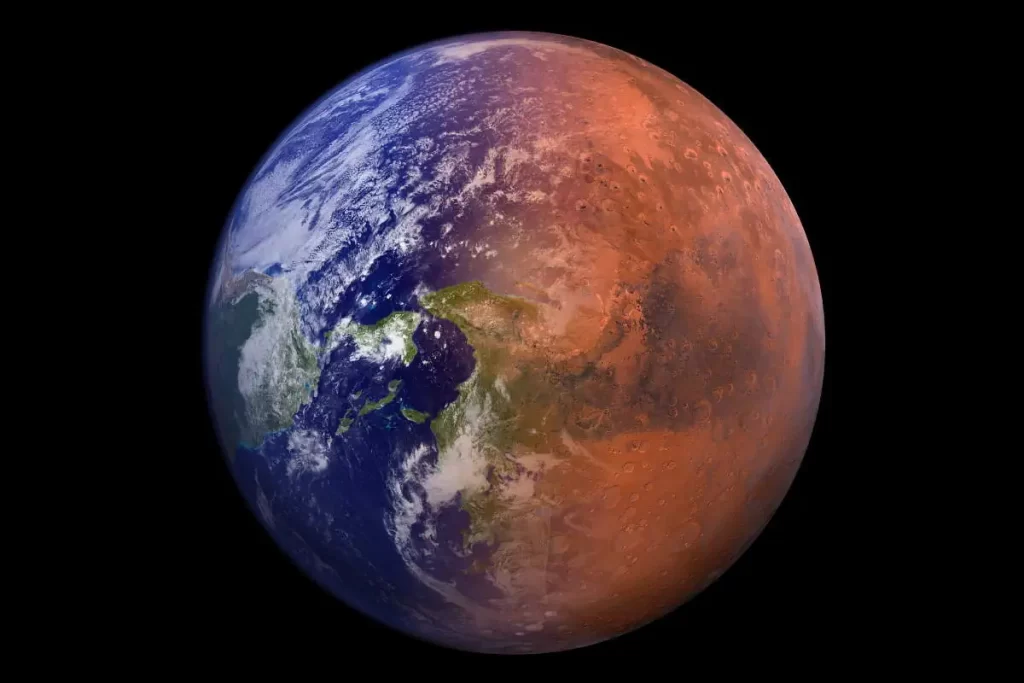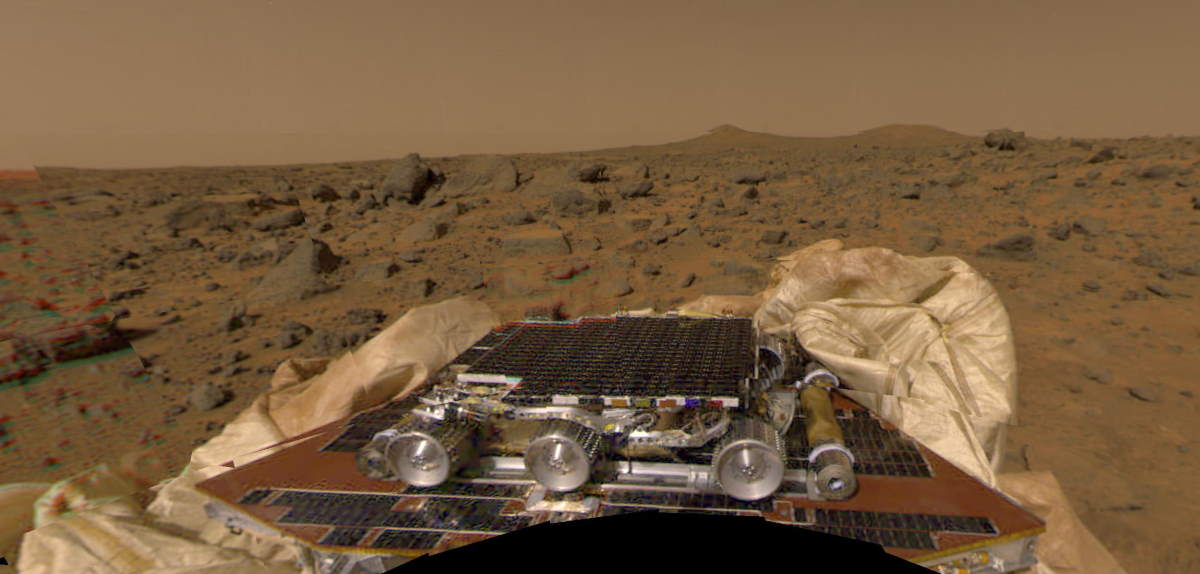NASA’s robotic spacecraft Mars Pathfinder landed on Mars on July 4, 1997. It was carrying a small rover named Sojourner and with that landing, Sojourner became the first operational rover on another planet.
July 4 story of what happened this day in Science, Technology, Astronomy, and Space Exploration history.
Mars Pathfinder and Sojourner
Mars Pathfinder (formerly known as the Mars Environmental Survey, or MESUR, Pathfinder) was launched on December 4, 1996.
The mission consisted of a lander, later renamed the Carl Sagan Memorial Station, and a lightweight, 10.6 kg (23 lb) wheeled robotic Mars rover named Sojourner. The primary objective of the mission was to demonstrate the feasibility of low-cost landings on and exploration of the Martian surface.
On July 4, 1997, Mars Pathfinder impacted the Martian surface at a velocity of about 18 meters per second (40 mph or 65 km/h). At first, it bounced about 15 meters (50 feet) into the air, then continued to bounce and roll another 15 times. Finally, it came to rest approximately 2.5 minutes after the impact and about 1 kilometer (0.62 mi) from the initial impact site.
The landing site in the Ares Vallis region was at 19.33 N, 33.55 W. Ares Vallis (named after the Greek name for Mars: Ares, the god of war) is an outflow channel on Mars. It appears to have been carved by fluids, perhaps water.
The rover “Sojourner” was a six-wheeled vehicle which is controlled by an Earth-based operator, who uses images obtained by both the rover and lander systems. because of the time delay of about 10 minutes between Mars and Earth (see: Speed of Light: perfect visual explanations), operations required some autonomous control by the rover.
Both lander and the rover outlived their design lives – the lander by nearly three times, and the Sojourner rover by 12 times.
Sojourner rover traveled nearly 330 feet (100 meters) during its three months on Mars. It never went more than 40 feet (12 meters) from the lander.
From landing until the final data transmission on September 27, 1997, Mars Pathfinder returned more than 16,500 images from the lander and 550 images from the rover, as well as chemical analyses of rocks and soil and extensive data on winds and other weather factors. The resulting scientific findings suggested that Mars was at one time in its past warm and wet, with the water existing in its liquid state and a thicker atmosphere.

Related: How Mars Died? The Death Of Mars
Video: Mars Pathfinder animation reel
The video below, published by the NASA Jet Propulsion Laboratory includes computer-generated animations related to the Mars Pathfinder spacecraft – from departing to Earth to the Sojourner rover driving on the Martian surface.
- 0:03: Departing Earth
- 0:35: Cruise stage close-up
- 0:46: Arrival at Mars
- 1:21: Entering the Martian atmosphere
- 1:40: Parachute opening
- 1:49: Dropping heat shield
- 2:02: Lowering airbags on the tether
- 2:13: Airbags inflate
- 2:22: Airbags bounce to a stop
- 3:04: Airbags deflate, exposing the Mars Pathfinder
- 3:44: Next day – camera mast rises
- 3:58: Sojourner rover drives down the ramp
- 4:15: Sojourner rover driving on the Martian surface

Sources
- Mars Pathfinder Project Information on the NASA website
- Mars Pathfinder on the NASA Mars Exploration Program website
- Mars Pathfinder on the NASA Jet Propulsion Laboratory website
- Mars Pathfinder on Wikipedia
- Moon Landings: All-Time List [1966-2025] - February 2, 2025
- What Is Max-Q and Why Is It Important During Rocket Launches? - January 16, 2025
- Top 10 Tallest Rockets Ever Launched [2025 Update] - January 16, 2025

